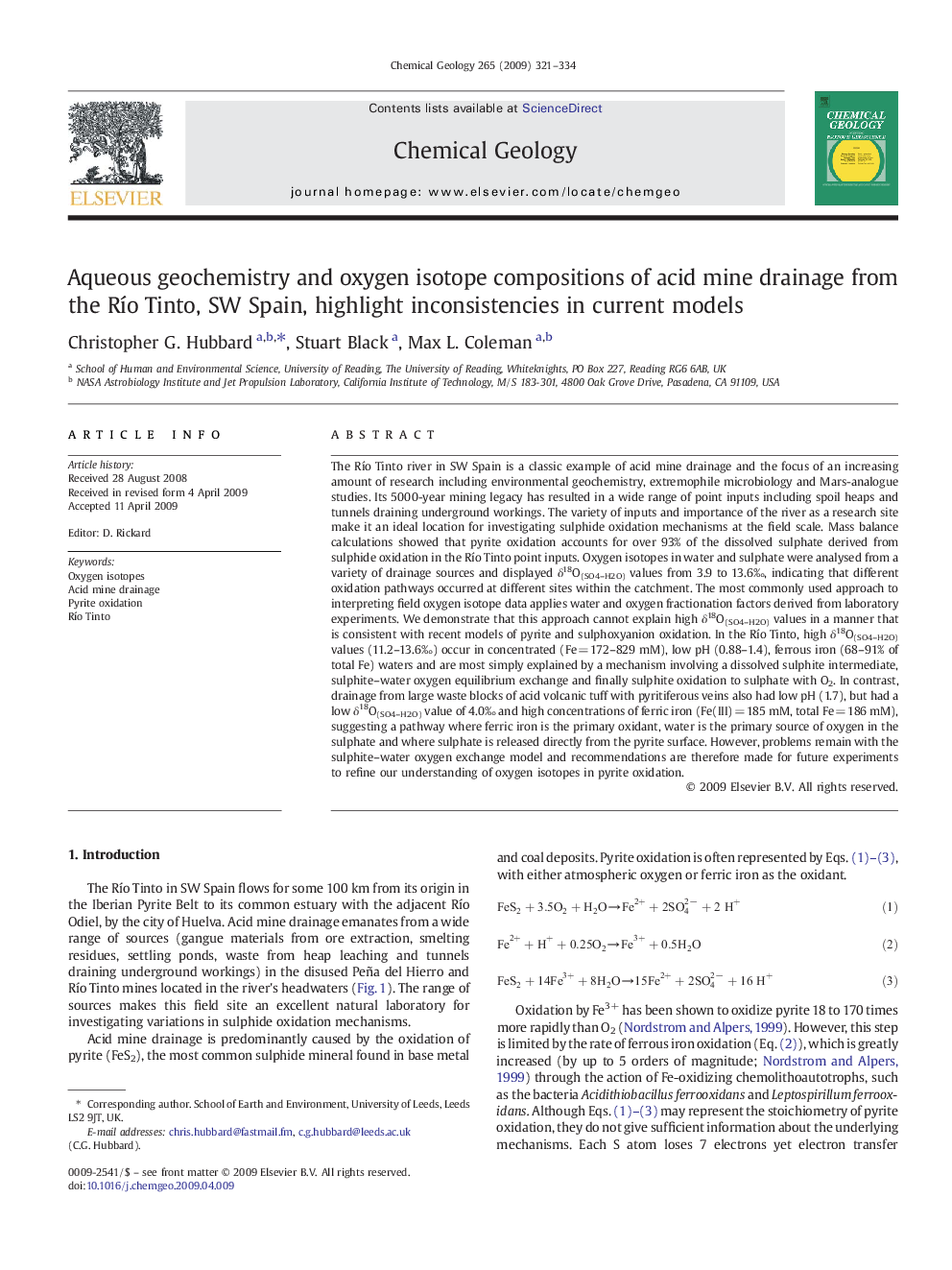| کد مقاله | کد نشریه | سال انتشار | مقاله انگلیسی | نسخه تمام متن |
|---|---|---|---|---|
| 4700217 | 1637703 | 2009 | 14 صفحه PDF | دانلود رایگان |

The Río Tinto river in SW Spain is a classic example of acid mine drainage and the focus of an increasing amount of research including environmental geochemistry, extremophile microbiology and Mars-analogue studies. Its 5000-year mining legacy has resulted in a wide range of point inputs including spoil heaps and tunnels draining underground workings. The variety of inputs and importance of the river as a research site make it an ideal location for investigating sulphide oxidation mechanisms at the field scale. Mass balance calculations showed that pyrite oxidation accounts for over 93% of the dissolved sulphate derived from sulphide oxidation in the Río Tinto point inputs. Oxygen isotopes in water and sulphate were analysed from a variety of drainage sources and displayed δ18O(SO4–H2O) values from 3.9 to 13.6‰, indicating that different oxidation pathways occurred at different sites within the catchment. The most commonly used approach to interpreting field oxygen isotope data applies water and oxygen fractionation factors derived from laboratory experiments. We demonstrate that this approach cannot explain high δ18O(SO4–H2O) values in a manner that is consistent with recent models of pyrite and sulphoxyanion oxidation. In the Río Tinto, high δ18O(SO4–H2O) values (11.2–13.6‰) occur in concentrated (Fe = 172–829 mM), low pH (0.88–1.4), ferrous iron (68–91% of total Fe) waters and are most simply explained by a mechanism involving a dissolved sulphite intermediate, sulphite–water oxygen equilibrium exchange and finally sulphite oxidation to sulphate with O2. In contrast, drainage from large waste blocks of acid volcanic tuff with pyritiferous veins also had low pH (1.7), but had a low δ18O(SO4–H2O) value of 4.0‰ and high concentrations of ferric iron (Fe(III) = 185 mM, total Fe = 186 mM), suggesting a pathway where ferric iron is the primary oxidant, water is the primary source of oxygen in the sulphate and where sulphate is released directly from the pyrite surface. However, problems remain with the sulphite–water oxygen exchange model and recommendations are therefore made for future experiments to refine our understanding of oxygen isotopes in pyrite oxidation.
Journal: Chemical Geology - Volume 265, Issues 3–4, 30 July 2009, Pages 321–334